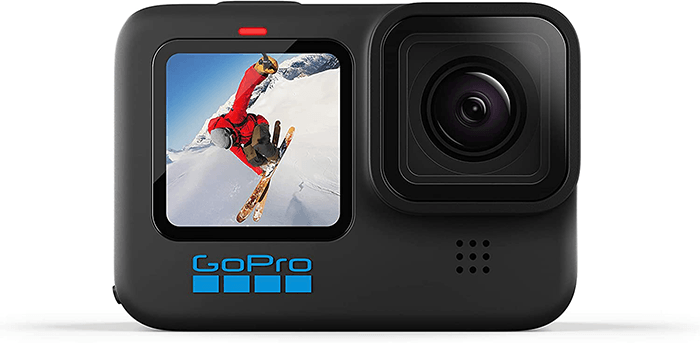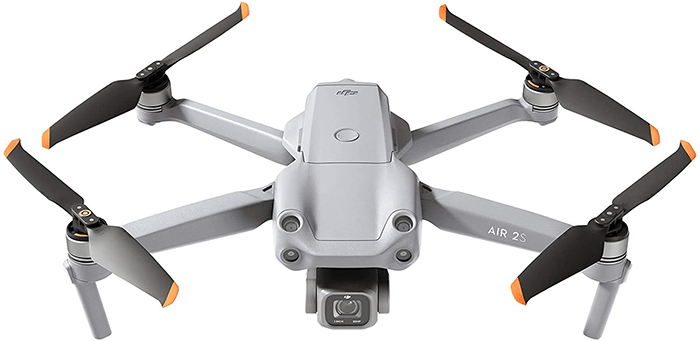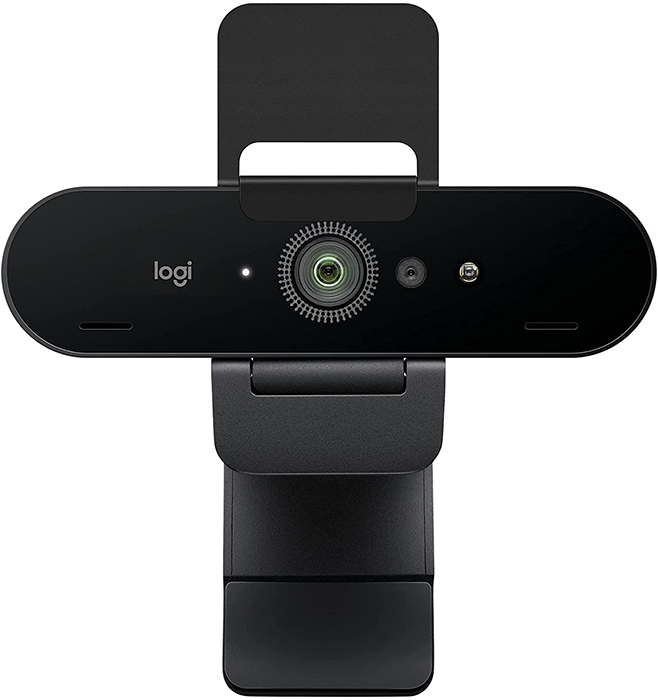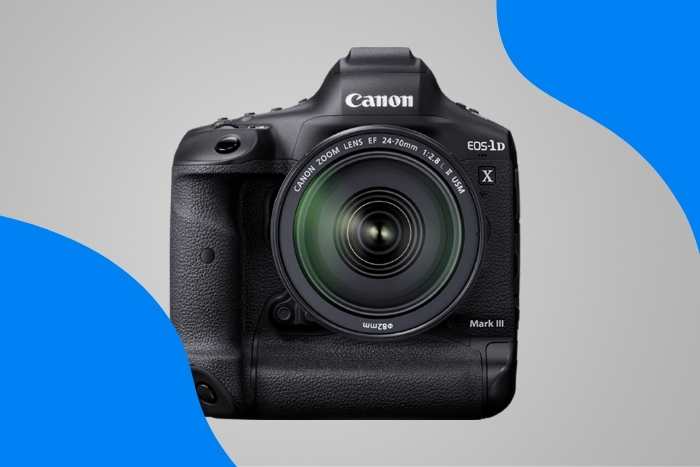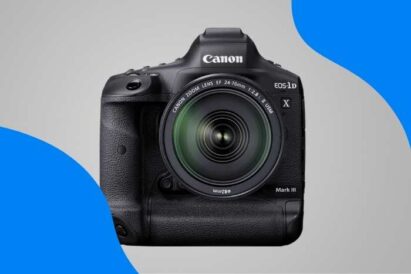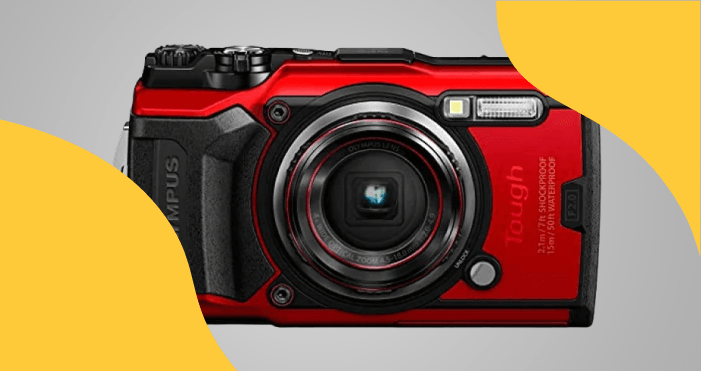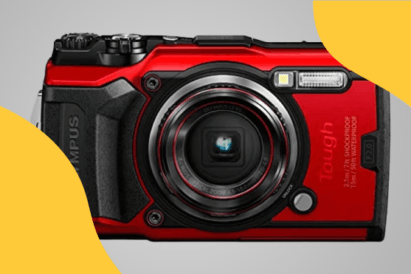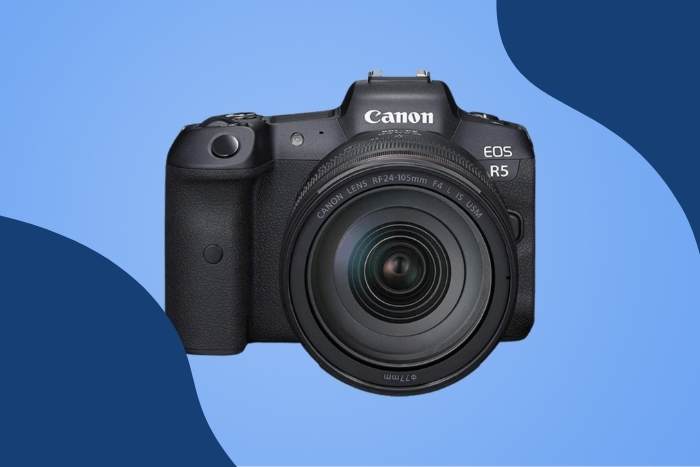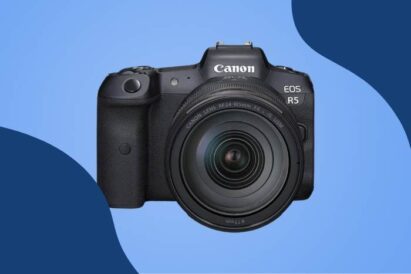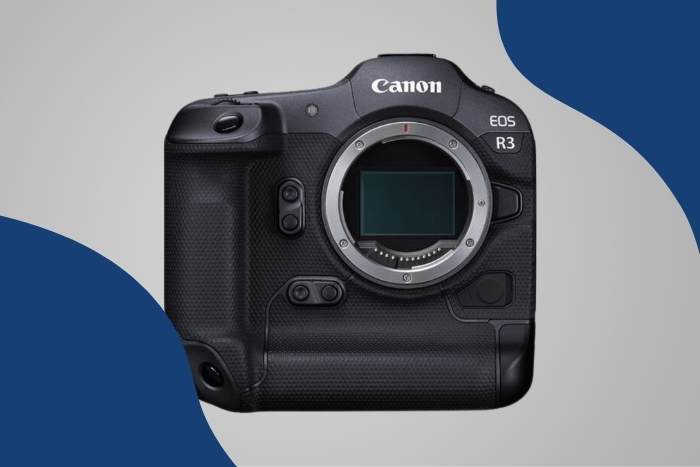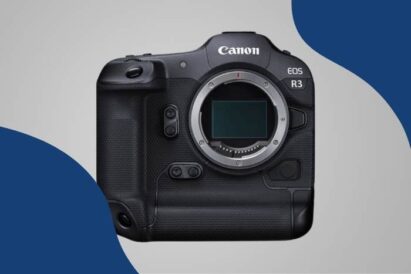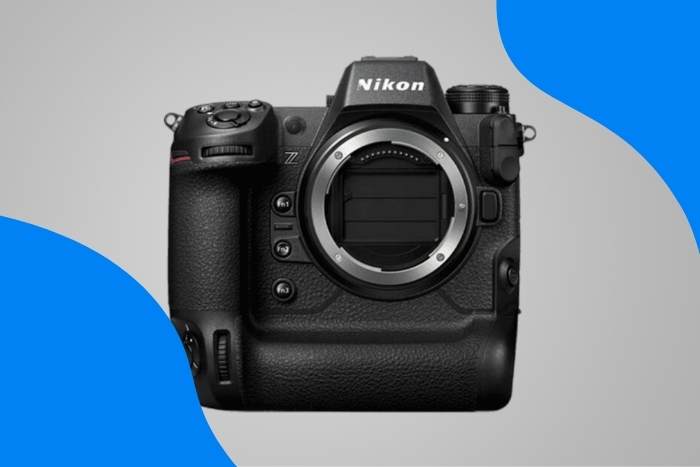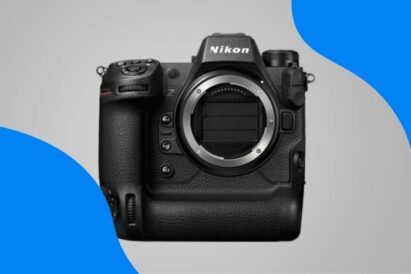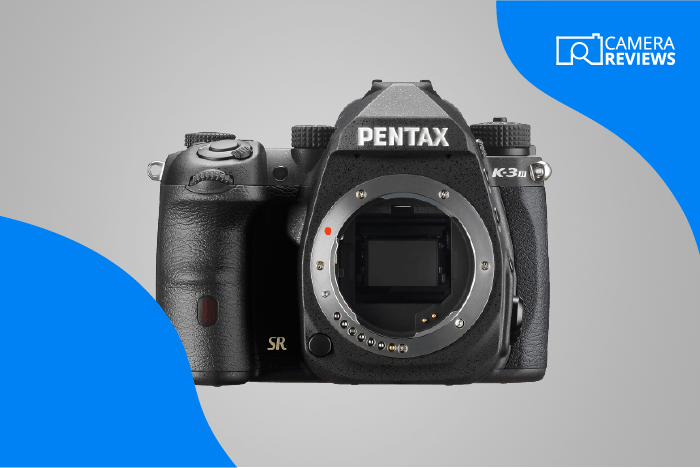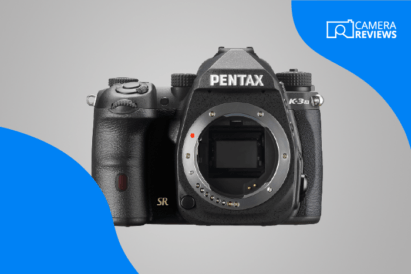If you are on the hunt for the perfect 4K camera but have no idea where to start looking, you have come to the right place! With so many fantastic options currently available, I know how challenging it is to find the right fit.
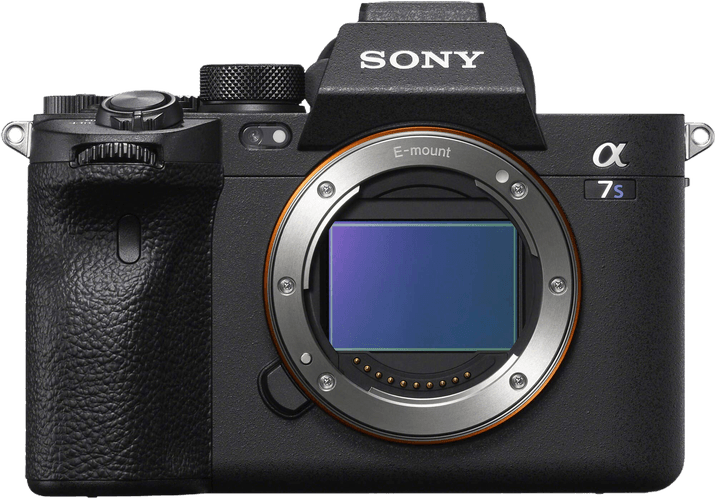
Sony a7S III
That’s why, after considerable research, I put together this broad list of the best 4K cameras. No matter what type of camera system you want, whether it’s a 4K DSLR camera, a 4K mirrorless camera, or even a drone, you will find all the top options here.
What is the Best 4K Camera for Video?
Before we go through our 16 best 4K cameras in more detail, here’s an overview of the top 10:

- Stunning 4K video quality
- No recording time limit
- Industry-leading autofocus
- Weather-sealed body
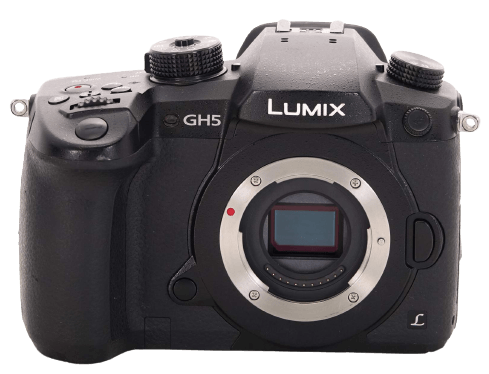
- 5.8K max video resolution
- Unlimited recording time
- Dual memory card slots
- Sensor-shift image stabilization
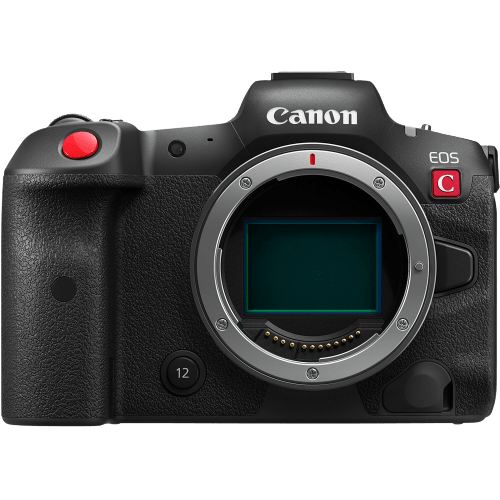
- 8K, 6K, and 4K video formats
- Cinema RAW Light video options
- A built-in fan that prevents overheating
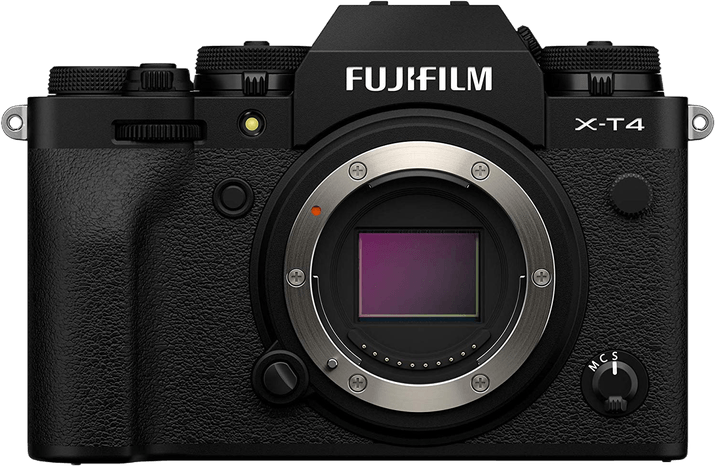
- Superb video and image quality
- Separate photo and video menus speed up workflow
- Fast continuous shooting speed
- Extensive customization options
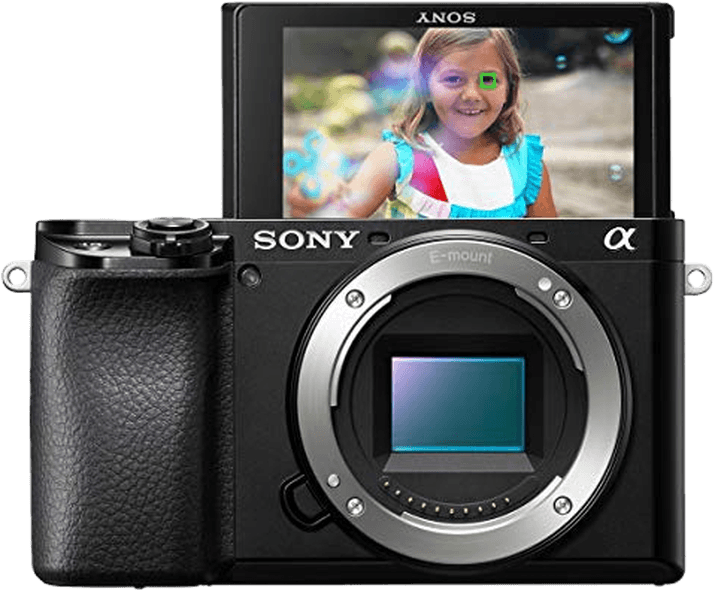
- Unbeatable price Fast and responsive autofocus
- Lightweight and compact design
- Easy to use controls
- Good 4K video quality
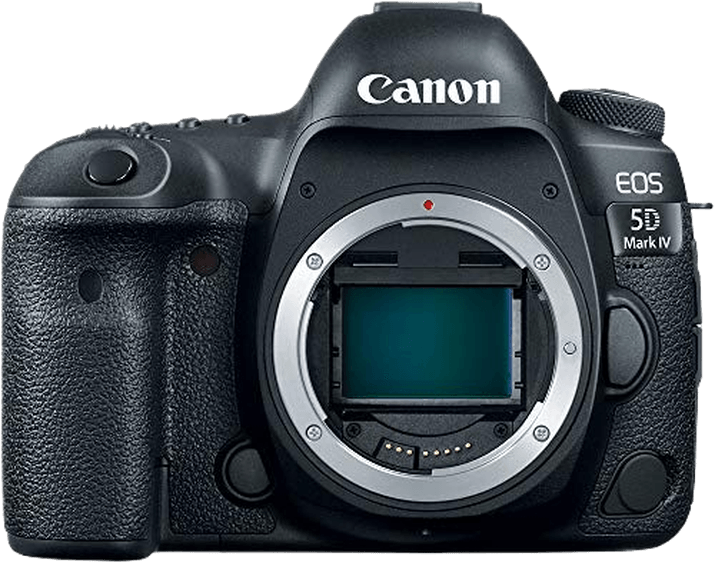
- Professional video controls
- Lighting fast video autofocus
- In-camera image stabilization
- Bright and bold Canon colors
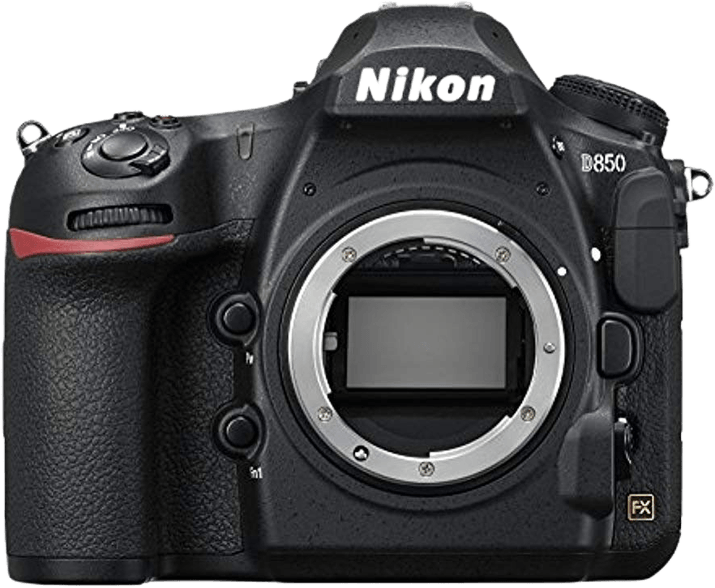
- Attractive price
- Crystal clear, uncropped 4K video
- 4K and 8K time-lapse modes
- High-resolution stills
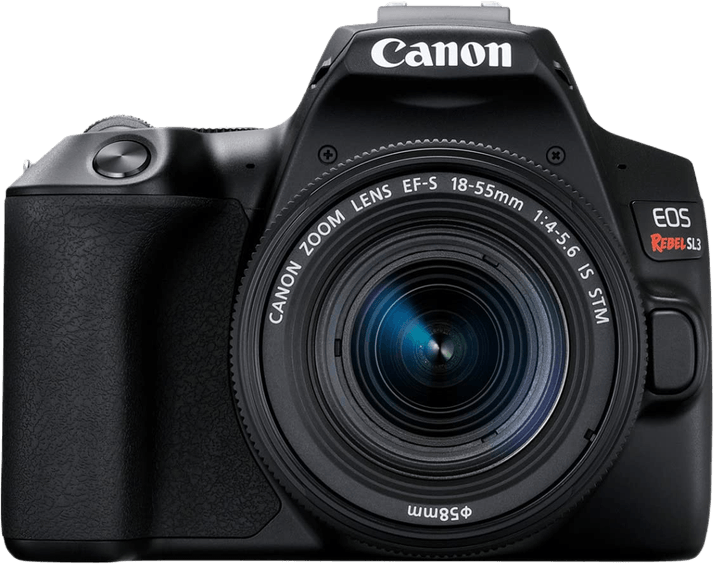
- Excellent Value
- Solid 4K video quality
- Fully articulated screen
- Compact body for a DSLR
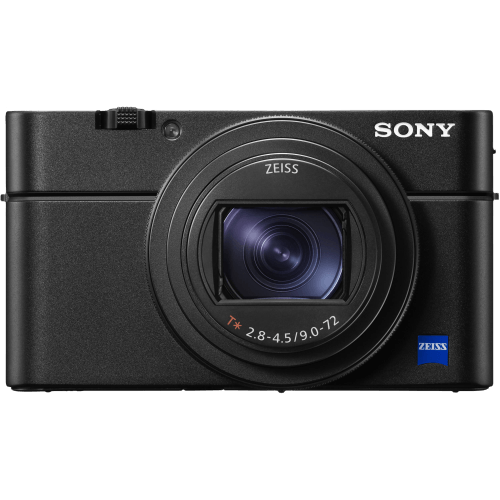
- Sharp and detailed 4K video
- Best autofocus of any point-and-shoot camera
- 5-axis image stabilization
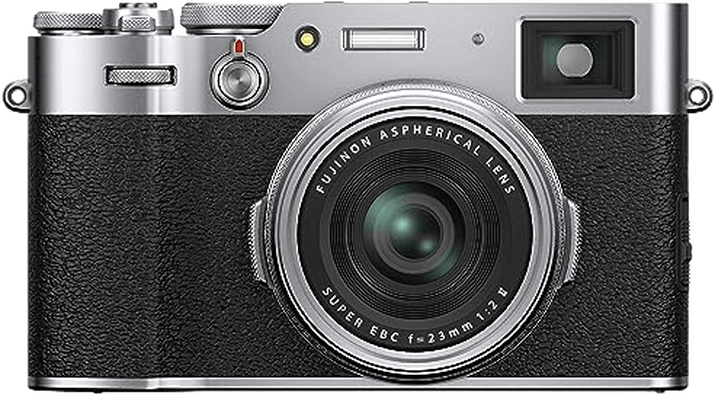
- Excellent image quality
- Strong low-light performance
- Excellent stills capabilities
16 Best 4K Cameras in Detail
Below are 16 of the top 4K cameras. We’ve split the list into three sections, best 4K mirrorless cameras, best 4K DSLR cameras, and best 4K speciality cameras. Keep reading to find out the pros and cons of each camera and which one is the best fit for you!
1. Sony a7S III (Best 4K Camera Overall)

| Camera Type |
Camera Type
|
| Megapixels |
Megapixels
12.1 MP |
| Sensor Format |
Sensor Format
|
| Sensor Size |
Sensor Size
23.8 x 35.6 mm
|
| Frame Rate |
Frame Rate
10 fps |
| Autofocus Points |
Autofocus Points
759 |
- Unbelievable low-light performance
- Excellent ISO range
- Fantastic AF system
- Impressive high-resolution EVF
- Microphone and headphone ports
- Pricey
- Low 12.2 MP resolution for photos
- Poor battery performance
- No 8K video
The Sony a7S III is the company’s newest flagship camera explicitly targeting low-light and video shooters. It houses a 12.1MP full-frame mirrorless sensor and an upgraded Bionz XR image processor. Additionally, the user interface has received a facelift compared to the previous model (the Sony a7S II), making it more user-friendly.
The first video feature that jumps off the page is that the A7S III records uncropped 4K videos with frame rates as high as 60 fps (frames per second). Moreover, it captures 4K/120p footage with a minimal 1.1x crop factor.
Another area where this camera is unmatched is video autofocus. It uses a hybrid phase-detection autofocus (AF) system that automatically locates faces, heads, and eyes and seamlessly tracks them without ever losing focus.
One more killer feature that you can’t overlook is the in-body stabilization that adds up to 5.5 stops of exposure. It significantly reduces camera shake and makes handheld shooting a walk in the park.
If you’re considering buying this model, have a look at these specs comparisons first:
- Sony a7S III vs Sony FX3
- Sony a7 II vs Sony a7S III
- Sony a1 vs Sony a7S III
- Canon EOS R5 vs Sony a7S III
- Canon EOS R5 C vs Sony a7S III
2. Panasonic Lumix GH6 (Best Panasonic 4K Camera)
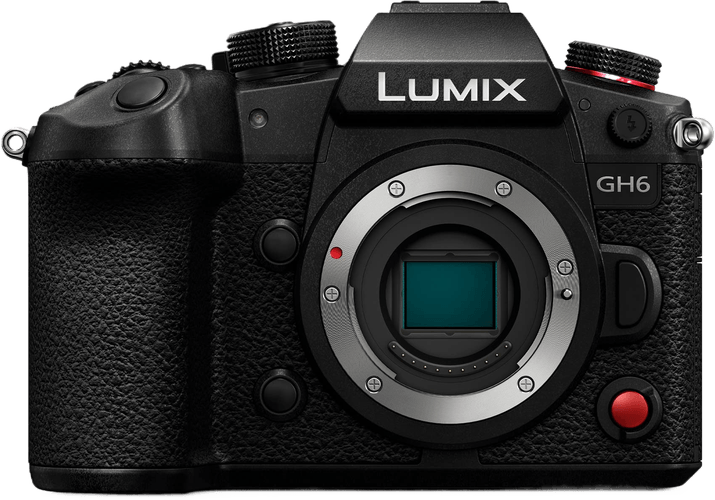
| Camera Type |
Camera Type
|
| Megapixels |
Megapixels
25 MP |
| Sensor Format |
Sensor Format
|
| Sensor Size |
Sensor Size
17.3 x 13 mm
|
| Frame Rate |
Frame Rate
14 fps |
| Autofocus Points |
Autofocus Points
315 |
- 5.8K max video resolution
- Unlimited recording time as built-in fan prevents overheating
- Sensor-shift image stabilization
- Dual memory-card slots
- Weather-sealed body
- Fairly expensive camera
- AF system lags behind other brands
- Mediocre low-light performance
- Large and heavy body isn't always comfortable to handle
- Battery life could be better
The Panasonic Lumix GH6 is a high-end hybrid camera and the successor to the Panasonic Lumix GH5. It has a brand new 25.2MP Micro Four Thirds sensor and the most advanced Venus Engine image processor. The pair work hand in hand to deliver stunning quality 5.8K videos and equally impressive photos.
Furthermore, the image sensor boasts the highest resolution ever seen in a Micro Four Thirds camera, and the readout speeds are off the charts. Whereas rolling shutter issues were sometimes present in older models, in the GH5, you’ll never have to worry about it. Also, thanks to the new built-in cooling system, there is now no video recording limit.
- The following camera comparisons will give you more info on how it matches up to other models:
Panasonic Lumix DC-GH5 vs GH6 - Panasonic Lumix DC-GH5 II vs GH6
- Panasonic Lumix DC-S5 vs GH6
- Panasonic Lumix DC-GH6 vs Sony A7 III
- Panasonic Lumix DC-GH6 vs Canon 90D
3. Canon EOS R5 C (Best 4K Canon Mirrorless)

| Camera Type |
Camera Type
|
| Megapixels |
Megapixels
45 MP |
| Sensor Format |
Sensor Format
|
| Sensor Size |
Sensor Size
24 x 36 mm
|
| Frame Rate |
Frame Rate
20 fps |
| Autofocus Points |
Autofocus Points
1,053 |
- The photo/video switch allows you to easily switch between shooting modes
- 5-axis In-camera image stabilization
- Compact and lightweight
- Unlimited video recording due to built-in fan preventing overheating
- Reduced video sizes with Cinema RAW Light modes
- Expensive
- Limited native lens compatibility
- Continuous AF only covers 80% of the image sensor in video mode
- Bigger than the original EOS R5
- Must use an external battery source for the fastest shooting speeds
The Canon EOS R5 C is a powerful full-frame mirrorless camera that takes all the best traits of the original Canon EOS R5 and adds advanced video features typically only available in high-end cinema cameras. Its 45MP full-frame CMOS sensor and DIGIC X image-processing engine allow it to record videos at resolutions of 4K, 6K, and even 8K!
A cool design characteristic of the Canon EOS R5 C is the new Photo/Video toggle switch that replaces the traditional power switch. It boots the 4K Canon camera up in two distinct shooting modes that use separate operating systems and menus. This gives users more control than ever and significantly increases work speeds.
Other features worth highlighting are 12-bit RAW video files, a built-in fan to prevent overheating, and dual-pixel autofocus.
4. Fujifilm X-T4 (Best 4K Fuji Mirrorless)

| Camera Type |
Camera Type
|
| Megapixels |
Megapixels
26 MP |
| Sensor Format |
Sensor Format
|
| Sensor Size |
Sensor Size
23.5 x 15.6 mm
|
| Frame Rate |
Frame Rate
20 fps |
| Autofocus Points |
Autofocus Points
425 |
- Decent APS-C BSI-CMOS sensor
- A great frame rate of 15 fps
- 6.5 stops of image stabilization
- 4K video (DCI or Ultra HD) up to 60 fps
- A fully articulating rear touchscreen
- 12 Film Simulation modes
- Expensive for an APS-C camera
- Autofocus speed and accuracy depends on the lens and the subject
- Unreliable face and eye detection
- No external battery charger provided
- Limited video recording time
- No subject tracking in video mode
The Fujifilm X-T4 is one of the iterations of cameras in Fuji’s lineup of premium APS-C cameras. It hit stores in April 2020 (replacing the Fujifilm X-T3) and immediately became one of the most sold mirrorless cameras globally. A 26.1MP APS-C sensor and a sophisticated X-Processor 4 image-processing engine are at its heart.
The first thing people love about this video camera is its size. Measuring 135x93x84mm and weighing only 607g, it is significantly smaller and lighter than most full-frame cameras. This makes it ideal for landscape, adventure, and travel videographers.
On top of that, it has a robust set of video features that include uncropped 4K video, 1080p slow-motion playback at frame rates of up to 240p, and best-in-class sensor-shift image stabilization technology.
5. Sony Alpha a6100 (Best Value 4K Camera)

| Camera Type |
Camera Type
|
| Megapixels |
Megapixels
24 MP |
| Sensor Format |
Sensor Format
|
| Sensor Size |
Sensor Size
15.6 x 23.5 mm
|
| Frame Rate |
Frame Rate
11 fps |
| Autofocus Points |
Autofocus Points
425 |
- Great value for the price
- Eye-detect autofocus for humans and animals
- Compact size
- 4K video option
- Flip-out touchscreen for selfies and vlogging
- No in-body stabilization
- Low 1/4000 s max shutter speed
- No GPS
- Not weather-sealed
- No headphone jack
The Sony Alpha a6100 is undoubtedly one of the best 4K cameras for those searching for a killer deal. It’s Sony’s entry-level mirrorless camera. It features a 24.2MP APS-C CMOS sensor and a speedy Bionz X image processor.
The Sony a6100 captures sharp and detailed 4K/24p videos using the entire sensor and only applies a minimal crop factor when recording video at 4K/30p. Additionally, the slow and quick (S&Q) mode can record 1080p, full-HD, slow-motion, and fast-motion clips directly in the camera.
While there is no in-camera stabilization, most Sony E Mount lenses have OSS optical image stabilization that improves the quality of handheld footage. It’s the perfect first camera to learn all the basics of photo and video for beginners and children just getting started in photography.
6. Canon EOS 5D Mark IV (Best 4K Canon DSLR)

| Camera Type |
Camera Type
|
| Megapixels |
Megapixels
30.4 MP |
| Sensor Format |
Sensor Format
|
| Sensor Size |
Sensor Size
24 x 36 mm
|
| Frame Rate |
Frame Rate
7 fps |
| Autofocus Points |
Autofocus Points
61 |
- Quality sensor produces detailed and vibrant images even at high ISOs
- Dual Pixel AF with eye detection
- User-friendly touch-to-focus screen
- 900-shot battery life
- Cinema-quality (DCI) 4K video
- Unreliable, imprecise subject tracking
- Limited dynamic range
- No in-body stabilization
- No bluetooth
- 64x crop factor with 4K video
The Canon EOS 5D Mark IV is a professional hybrid DSLR with a 30.4MP, full-frame, CMOS sensor and a DIGIC 6+ image processor. The two work together diligently to deliver out-of-this-world photos and videos. While it’s slightly older than most Canon cameras on this list (released in September 2016), there are no other DSLR cameras that match its overall lineup of features.
Because of its high-quality 4K video and superb dual-pixel video autofocus, event photographers and documentarians are two groups who can’t get enough of this camera. Locating and tracking moving subjects is a breeze, and the image colors come out looking bright and natural. My only complaint is that the 1.27x 4K crop factor limits how wide you can shoot video.
7. Nikon D850 (Best 4K Nikon DSLR)

| Camera Type |
Camera Type
|
| Megapixels |
Megapixels
45.7 MP |
| Sensor Format |
Sensor Format
|
| Sensor Size |
Sensor Size
23.9 x 35.9 mm
|
| Frame Rate |
Frame Rate
7 fps |
| Autofocus Points |
Autofocus Points
153 |
- Fantastic overall image quality
- Excellent 3D continuous AF tracking
- Long, 1,840-shot battery life
- Durable, weather-sealed construction
- Sharp 4K/30p Ultra HD video
- No customizable shooting presets
- Slow autofocus in Live View
- Needs an expensive XQD card
- Rolling shutter noticeable in 4K video
- Slow 7 fps or 9 fps with an expensive battery grip
The Nikon D850 is a high-resolution, intermediate-level DSLR featuring a 45.7MP back-side illuminated full-frame sensor and an Expeed 5 image processor. It was the first Nikon DSLR to shoot uncropped 4K video using the entire sensor. And it captures detailed footage at frame rates of 24, 25, or 30 fps.
While the camera is on the large side, its handling and ergonomics are terrific. The tilting touchscreen LCD helps when filming at difficult angles, and the illuminated LCD on the top of the camera means you can easily adjust the camera settings even when in the dark.
Another awesome feature is the Time-Lapse mode. A built-in interval timer generates drool-worthy 4K and 8K time-lapse movies.
8. Canon Rebel EOS SL3 (EOS 250D - Most Affordable 4K DSLR)

| Camera Type |
Camera Type
|
| Megapixels |
Megapixels
24 MP |
| Sensor Format |
Sensor Format
|
| Sensor Size |
Sensor Size
22.3 x 14.9 mm
|
| Frame Rate |
Frame Rate
5 fps |
| Autofocus Points |
Autofocus Points
9 |
- Excellent value
- Compact body for a DSLR
- Insanely good battery life
- Fully articulating screen is helpful for capturing video
- Solid 4K video quality
- Only 9 autofocus points
- Lacks in-body image stabilization
- No USB charging
- No weather sealing
- 1.7x 4K crop factor
The Canon Rebel EOS SL3 (EOS 250D in Europe) is an entry-level 4K DSLR. It’s ideal for people on a budget. A 24.1MP APS-C CMOS sensor and a DIGIC 8 image processor are at its core.
Unfortunately, it applies a significant 1.7x crop to 4K footage. But the quality is excellent, and the straight-out-of-the-camera colors are bold and bright.
Its compact body, fully-articulating rear LCD, and long-lasting battery make it a favorite of YouTubers and travel vloggers alike. Additionally, the new Guide mode gives newbies step-by-step instructions on how to get the most out of the camera. On the downside, one crucial thing to note—there is no USB charging.
9. Sony Cyber-shot RX100 VI (Best 4K Compact Camera)
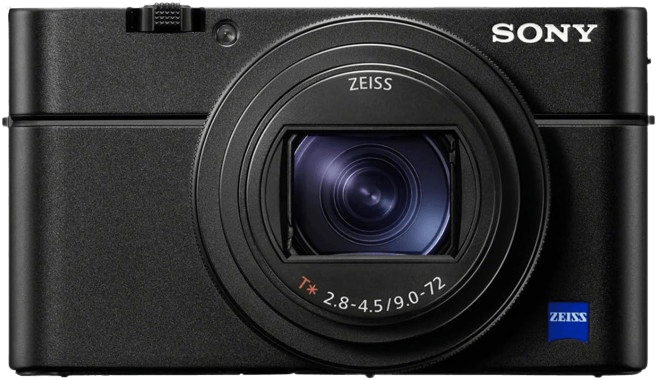
| Camera Type |
Camera Type
|
| Megapixels |
Megapixels
20 MP |
| Sensor Format |
Sensor Format
|
| Sensor Size |
Sensor Size
13.2 x 8.8 mm
|
| Frame Rate |
Frame Rate
5 fps |
| Autofocus Points |
Autofocus Points
357 |
- Pocket-sized point-and-shoot
- High-quality Zeiss zoom lens with 8x zoom
- Advanced autofocus system with subject tracking
- Excellent 4K video performance
- Microphone jack for audio recording
- Very expensive
- Image quality isn't great
- Not the best low-light performance
- No microphone jack
- No headphone jack
The Sony Cyber-shot RX100 VI is Sony’s flagship point-and-shoot camera. It boasts a large one-inch 20.1MP stacked CMOS sensor and a lightning-fast Bionz X image processor. The pair makes this one of the most advanced compact video cameras and produces ridiculously sharp photos and videos.
It films uncropped Ultra HD 4K videos at either 24 or 30 fps and has a mode that captures smooth slow-motion 1080p HD video clips. Furthermore, the high-quality Sony Zeiss lens has an 8.3x zoom and is fantastic for everything from street to landscape photography.
It’s on the expensive side, but in my opinion, the price is well worth it. If it’s out of your price range, check out its cheaper predecessor, the Sony Cyber-shot RX100 V.
10. Fujifilm X100V (Best Lightweight 4K Camera)

| Camera Type |
Camera Type
|
| Megapixels |
Megapixels
26 MP |
| Sensor Format |
Sensor Format
|
| Sensor Size |
Sensor Size
23.5 x 15.6 mm
|
| Frame Rate |
Frame Rate
11 fps |
| Autofocus Points |
Autofocus Points
425 |
- 26 MP sensor for good noise reduction and fast readout
- Sharp JPEGs with low noise
- 15 quality film simulations
- Hybrid optical/electronic viewfinder
- Tilting touchscreen
- Excellent 4K Ultra HD video
- Slow AF and poor with optical viewfinder
- Lacks in-body image stabilization
- Limited customization
- Complicated menus
- Optional weather sealing costs extra
Another popular point-and-shoot camera is the Fujifilm X100V. It’s a high-end camera with a 26.1MP APS-C sensor, an X-Processor 4 image-processing engine, and a 23mm pancake prime lens. It borrows many video features from the Fujifilm X-Pro3 interchangeable lens camera and boasts the best 4K video quality ever for a camera with a fixed prime lens.
While the 23mm f/2 lens may not have the versatility of a zoom lens, it excels in low-light shooting and produces buttery bokeh effects in both photos and videos. Moreover, the built-in four-stop ND filter widens the dynamic range, improves shadow and highlight detail, and improves post-production video editing.
11. Panasonic Lumix ZS200 (TZ200 - Best 4K Camera for Wildlife)
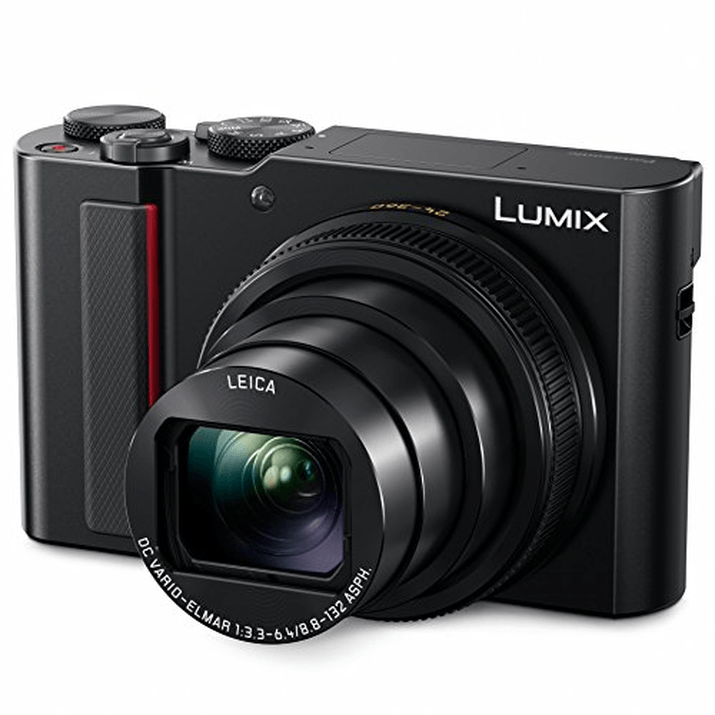
| Camera Type |
Camera Type
|
| Megapixels |
Megapixels
20 MP |
| Sensor Format |
Sensor Format
|
| Sensor Size |
Sensor Size
13.2 x 8.8 mm
|
| Frame Rate |
Frame Rate
10 fps |
| Autofocus Points |
Autofocus Points
49 |
- Low price
- Excellent quality 4K video
- Incredibly versatile focal length range
- 5-axis in-body image stabilization
- Unmatched battery life
- High maximum aperture
- Fixed rear screen
- Not weather sealed
- 1.5x 4K crop factor
- AF occasionally hunts in video mode
The Pansonic Lumix ZS200 (TZ200 in Europe) is a pocket-sized compact digital camera featuring a one-inch 20.1MP CMOS sensor and a Venus Engine image processor. While its overall speed and Ultra HD 4K video quality are impressive, its true standout feature is the high-quality Leica Zoom lens.
The lens has a remarkable 24-360mm equivalent focal range, equating to 15x optical zoom. However, during 4K video recording, a 1.5x crop factor is applied. This changes the focal length range to 36-540mm. While this limits the camera on the wide end, the longer focal length helps film animals and wildlife.
12. Canon PowerShot G7X Mark III (Best 4K Camera for Sports)
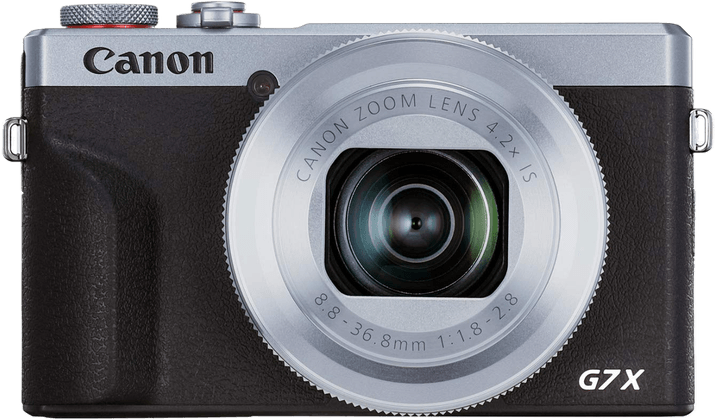
| Camera Type |
Camera Type
|
| Megapixels |
Megapixels
20 MP |
| Sensor Format |
Sensor Format
|
| Sensor Size |
Sensor Size
13.2 x 8.8 mm
|
| Frame Rate |
Frame Rate
30 fps |
| Autofocus Points |
Autofocus Points
31 |
- A high dynamic range
- Fast continuous shooting speeds
- Stylish design
- Pocket-sized body
- Flip-up rear LCD touchscreen
- Live-streaming compatible
- Soft focus at wider focal lengths
- No subject tracking in continuous shooting mode
- No electronic viewfinder
- Weak battery life for a compact
- 10 minute 4K recording limit
The Canon PowerShot G7 X Mark III is another hybrid point-and-shoot video camera. It is powered by a one-inch 20.1MP BSI-CMOS sensor and a DIGIC 8 image processor. It delivers good quality 4K/30p videos, but Canon decided to omit 4K/24p shooting. This shouldn’t be a dealbreaker for most people, but if it is, you should go with one of the three compact video cameras above.
While it has solid 4K video capabilities, still shooting is where the Canon PowerShot G7 X Mark III shines brightest. The 24-100mm f/1.8-2.8 zoom lens is sharp at every focal length.
Plus, courtesy of its low max aperture and optical image stabilization, it performs well even with less light. Also, its 30 fps continuous shooting speed (8 fps with AF) captures sharp, in-focus sports and action shots.
13. Blackmagic Pocket Cinema Camera 4K(Best 4K Camera for Filmmakers)
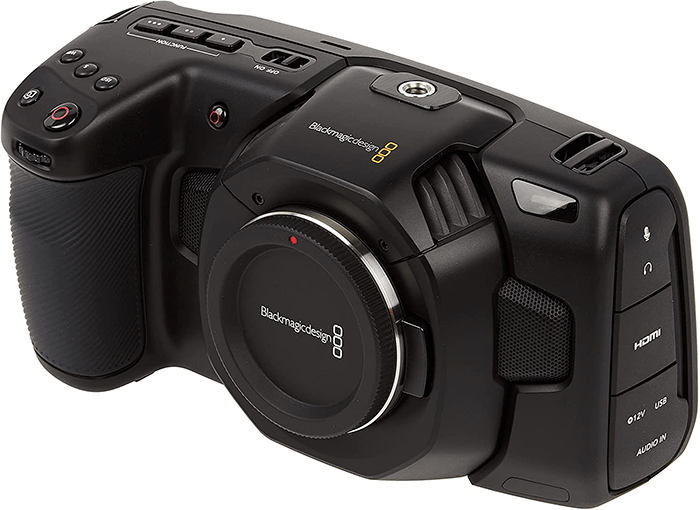
The Blackmagic Pocket Cinema Camera 4K is a retro-looking video-only camera. While it doesn’t have any photo capabilities, its professional video specs are mind-blowing.
For starters, it features a large Four Thirds sensor with a maximum resolution of 4096×2160 pixels. In addition, the DCI 4K footage has a classic cinematic look, ideal for documentarians and filmmakers.
The camera has a compact, lightweight, and durable design, courtesy of its carbon fiber composite construction. Other design features include a microphone jack, a headphone jack, multiple air vents, and a substantial five-inch touchscreen LCD.
Finally, the RAW 4K video footage is impressively sharp and has beautiful colors. If you are interested in 6K video quality or dual native ISO, consider buying one of its siblings, the Blackmagic Pocket Cinema Camera 6K or the Blackmagic Pocket Cinema Camera 6K Pro.
- Fantastic value for the money
- Excellent 4K video quality
- Giant 5-inch touchscreen display
- Advanced audio controls
- Portability
- Doesn’t shoot stills
- No in-camera stabilization
- No articulating screen
- Not weather-sealed
- A weak battery
14. GoPro Hero10 Black (Best Action Camera 4K+)
The GoPro Hero10 Black is a durable action camera built for people with adventurous spirits. Its 1/2.3-inch, 23MP sensor might not capture award-winning photos, but it excels at capturing video. It’s a fantastic budget action camera.
With 4K and 5.3K video resolutions and unbeatable HyperSmooth image stabilization technology, it’s the most advanced GoPro and the first to seriously rival mirrorless and DSLR cameras.
In addition, it’s fully waterproof, shoots both slow-motion and ultra-slow-motion videos, and has live streaming capabilities. Also, the dual screens on the front and back of the camera make shooting “selfie” footage unbelievably easy. For adventure junkies and thrill-seekers, the GoPro Hero10 Black is a must-own camera, in my opinion.
- 5.3K max video resolution
- Industry-leading stabilization technology
- Built-in slow-motion and time-lapse modes
- Tiny, rugged body built for adventures
- 100% waterproof up to 10 meters without a case
- A small sensor Poor low-light performance Occasional overheating issues The battery door has to be open during charging Battery drains quickly when shooting video in 5.3K
- A small sensor
- Poor low-light performance
- Occasional overheating issues
- The battery door has to be open during charging
- Battery drains quickly when shooting video in 5.3K
15. DJI Air 2S (Best 4K Drone Camera)
The DJI Air 2S is a compact and highly portable drone with advanced professional features and a budget-friendly price. It’s the first DJI consumer drone to feature a 20MP, one-inch CMOS sensor. While the megapixel (MP) count is lower than the DJI Mavic Air 2, the video and image quality are substantially better.
Regarding video quality, the DJI Air 2S can shoot 5.4K videos at 30p, 4K videos at 60p, and 1080p Full HD videos at 120p. Furthermore, the footage is stunningly smooth, thanks to the built-in three-axis gimbal.
Lastly, even beginners can fly this drone confidently and worry-free thanks to four-way obstacle avoidance, “intelligent” flight modes, and a return-to-home button that automatically flies the drone back to you.
- Superb image quality
- A large one-inch sensor
- Great image stabilization
- Intuitive obstacle avoidance technology
- Compact, foldable design
- Strong battery life
- You can’t adjust the aperture
- Max 1080p resolution using MasterShots setting
- Active track mode sometimes loses the subject
- The controller is on the large side
- The lightweight body is challenging to fly in windy conditions
16. Logitech Brio Stream (Best 4K Webcam)
Even though it’s not a traditional camera, the Logitech Brio Stream is highly sought-after by YouTubers, gamers, and business professionals. It’s a detachable webcam with a 4K camera, a 90° field of view, and frame rates of up to 90 fps. Moreover, you can pair it with either a laptop or desktop computer.
Better yet, it can live stream 4K footage directly to platforms such as YouTube and Twitch. The built-in microphone and 5x digital zoom are also nice features to have. Throw in that it’s by far the cheapest camera on this list, and it’s an excellent option to consider.
- Unrivaled 4K video quality
- 90-degree field of view
- Excellent quality audio
- Best in class live streaming
- Simple and easy-to-use
- Expensive compared to competitors
- No 4K recording, only streaming
- Occasional overheating issues
- No optical zoom
- The clip feels cheap
Our Verdict
Every camera on this list has one thing in common, they all produce high-quality 4K videos. Regardless of which one you ultimately choose, you will be thrilled with the results. However, some undoubtedly stand out in one way or another. So with that in mind, let’s do a quick review of the cameras we covered above.
- What is the best mirrorless 4K camera? The Sony a7S III.

Sony a7S III
- What is the best budget mirrorless 4K camera? The Sony Alpha a6100.
- What is the best DSLR 4K camera? The Canon EOS 5D Mark IV.
- What is the best budget DSLR 4K camera? The Canon Rebel EOS SL3.
- What is the best compact 4K camera? The Sony Cyber-shot RX100 VI.
Common FAQs on 4K Cameras Answered:
Here are a few of the most common questions people have when looking into purchasing a new 4K camera and our answers.
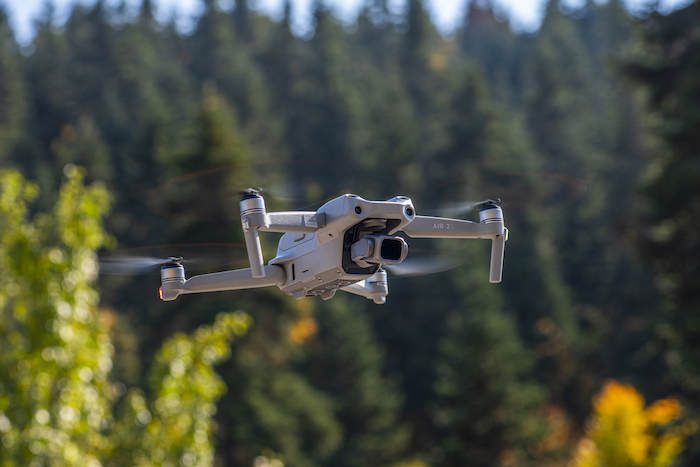
What is a 4K Camera?
A 4K camera is any device that can record video at resolutions of 4K or higher. There are two commonly recognized types of 4K recording formats, Ultra HD (UHD) 4K and DCI (Digital Cinema Initiatives) 4K. UHD footage has a resolution of 3840×2160 pixels, whereas DCI (sometimes known as Cinematic 4K) has a resolution of 4096×2160 pixels.
What Does 4K Mean in a Camera?
4K stands for “four thousand” and refers to the video footage’s approximate width (in pixels). 4K videos are high-resolution files that retain tons of detail and have four times as many pixels as 1080p Full HD video files.
Do I Really Need to Shoot 4K?
For beginners, the answer is no. Even though video quality is essential, learning the basics of composition, lighting, and audio are the first things that you need to master.
However, once you are more experienced, having 4K is a must. Even if you ultimately decide to oversample the 4K footage and output it in 1080p Full HD resolution, the flexibility and quality of initially capturing the footage in 4K will make an enormous difference in the final product.
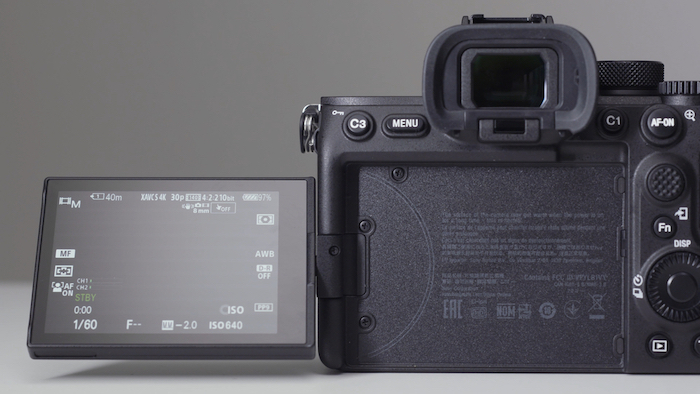
How Much Do 4K Cameras Cost?
I wish I could give you one flat price for all 4K cameras, but unfortunately, that is not how camera gear works. The price range of 4K cameras is massive, with budget cameras starting at a couple of hundred dollars and high-end cinema cameras costing tens of thousands.
What is the Best 4K Camera for Live Streaming?
4K live streaming is still a relatively new technology, and even though many cameras can record 4K footage, only a select few can live stream 4K video. My favorite 4K cameras for live streaming are the Canon PowerShot G7 X Mark III, the Logitech Brio Stream webcam, and the GoPro Hero10 Black. The Sony Alpha a7 IV and the Blackmagic Pocket Cinema Camera 6K Pro are also excellent 4K camera options.


